How Henry VIII Accidentally Changed The Way We Write History
AncientPages.com - In 1534, King Henry VIII infamously broke away from the Catholic Church, becoming the head of the Church of England. Following this, two lesser-known acts were passed, the Suppression of Religious Houses Act 1535 and the Suppression of Religious Houses Act 1539 (also known as the “two Acts of Dissolution”).
Portrait of Henry VIII - After Hans Holbein the Younger (1497/1498–1543). Walker Art Gallery
These acts were the legal instruments of what is now known as the dissolution of the monasteries, a long process throughout which the hundreds of priories, convents, friaries, and other religious houses which fell under the English monarch’s rule saw their holdings confiscated by the Crown. In doing so, Henry unwittingly set in motion a series of events that would forever change how scholars of English history would access the primary sources used in research.
Because monasteries had served various roles throughout history, the dissolution had wide-ranging consequences. It changed the landscape of England, with religious buildings slowly entering private hands – but it also changed the scholarly landscape.
Many of Britain’s early historians came from monasteries (often in the form of chroniclers), including Gerald of Wales, Bede the Venerable and Roger Bacon. As record-keepers, they also preserved the primary sources that continue to be studied by researchers today.
Manuscripts, like the religious houses’ other possessions, slowly changed hands in the decades following the dissolution. The king took several manuscripts for himself and more were taken and hidden by former members of the orders, or local inhabitants. Likely thousands disappeared.
The extent of the loss, while difficult to estimate, was extensively researched by Anglo-Saxonist and palaeographer (historical handwriting analysis expert) Neil Ripley Ker in his book, Medieval Libraries of Great Britain which was first published in 1941. This research is now available as a continually updated database through the combined efforts of current scholars.
Where did the manuscripts go?
Over the past decades, bibliographical research has shown that some were gathered by local, and often little-known, collectors. As for the rest, the writings of contemporary antiquaries (the people interested in the material remains of the past) provide precious information on what existed before the dissolution took place, how much disappeared, and how.
From 1533, English poet and antiquary John Leland undertook the arduous task of inventorying the most important manuscripts from the monastic houses, listing his work to date in a then-unpublished address commonly known as the Newe Yeares Gyfte, in 1546. Meanwhile, Leland’s associate John Bale compiled a Summary of the Famous Writers of Great Britain, founded upon Leland’s work and first published in Latin in 1548, for which the preparatory notes survive in Oxford’s Bodleian Library.
Left: John Leland by Thomas Charles Wageman (1824). National Portrait Gallery; Right: Robert Cotton by Cornelis Janssens van Ceulen (c. 1629). Trinity College, Cambridge
Bale’s preface to the Newe Yeares Gyfte tells us that many of the manuscripts ended up cut up for use as candlesticks or boot polishing cloth, some were sold to foreign nations, and many to book binders.
Such recycling had already taken place in the past. The membrane (treated animal skin, also known as parchment or vellum) from which most manuscripts were made could be reused to make new books, notably as binding material, and also had less obvious but not less useful afterlives. It would continue for many years to come, too. Notably, one of the copies of the Magna Carta allegedly had to be rescued from a tailor’s shop in 1629.
The Magna Carta in question found its way into the collection of antiquary Sir Robert Cotton. Like other collectors before him, Cotton sought to preserve the witnesses of British history, in particular, the now-dispersed monastic manuscripts. His collection still survives today, as the Cotton manuscripts became one of the foundational collections of the British Library.
The dissolution itself came at a turning point in historical methods. The 16th century saw the spreading through England of a new intellectual movement coming from Italy, where it had begun over a century earlier: humanism. Renaissance humanism was concerned (at first) with the study of the classical world, eventually producing a new culture of learning involving the re-evaluation of historical sources (including the aforementioned manuscripts).
On the continent, this often involved consulting the texts in the monasteries themselves. In England, where the monasteries no longer existed, these sources found their ways into the hands of the scholar-collectors who wished to use them, like Matthew Parker and Cotton.
Neither Parker nor Cotton limited themselves to gathering these documents. Their libraries were the centre of research circles, which used, edited, and sometimes published original manuscripts using another continental creation – the printing press. While antiquaries were not necessarily historians, and have generally been considered more interdisciplinary, their work facilitated historical research through both the preservation and the dissemination of primary sources.
Historical research has evolved a lot since the 16th century. The sources saved from destruction or dispersion at the time of the dissolution have been read, re-read, translated, studied, and contextualised in many ways since the days of the early antiquaries.
Henry VIII may have never intended to endanger these manuscripts. However, it is indisputable that the dissolution had a profound effect on English and indeed British scholarship, marking the minds of budding humanistic historians, and giving them unprecedented access to original documents.
Besides its impact on the historiography of its time, the dissolution could have drastically changed the sources we continue to use. Without the preservationist impulse of collectors, the surviving manuscripts may have well disappeared into tailor and cobbler shops, never to be seen again.
More than just a story of loss and destruction, the dissolution is also the story of efforts, both big and small, collective and individual, to preserve a country’s heritage in a time of great change and uncertainty.
Provided by The Conversation
This article is republished from The Conversation under a Creative Commons license. Read the original article.
More From Ancient Pages
-
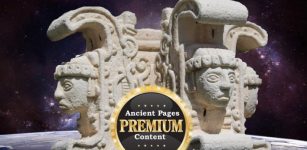 Mysterious Ancient Tomb Reveals ‘Impossible’ Cosmic Connection – Wrong Identity – Part 1
Ancient Mysteries | Oct 11, 2020
Mysterious Ancient Tomb Reveals ‘Impossible’ Cosmic Connection – Wrong Identity – Part 1
Ancient Mysteries | Oct 11, 2020 -
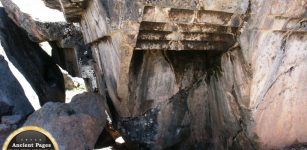 Enigma Of Ancient Upside Down Stairs At Sacsayhuamán
Ancient Mysteries | May 27, 2014
Enigma Of Ancient Upside Down Stairs At Sacsayhuamán
Ancient Mysteries | May 27, 2014 -
 Sacred Helgafell Mountain And The Story Of Torolv Mostrarskjegg
Myths & Legends | Mar 13, 2024
Sacred Helgafell Mountain And The Story Of Torolv Mostrarskjegg
Myths & Legends | Mar 13, 2024 -
 On This Day In History: Gold Discovery In The Yukon – On August 16, 1896
News | Aug 16, 2016
On This Day In History: Gold Discovery In The Yukon – On August 16, 1896
News | Aug 16, 2016 -
 Calçoene – Amazon Stonehenge And The Mysterious Amapán Megalithic Culture
Civilizations | Feb 14, 2018
Calçoene – Amazon Stonehenge And The Mysterious Amapán Megalithic Culture
Civilizations | Feb 14, 2018 -
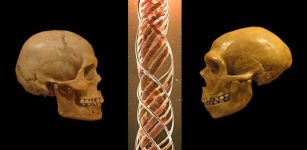 5 Surprising Things DNA Has Revealed About Our Ancestors
DNA | Sep 27, 2023
5 Surprising Things DNA Has Revealed About Our Ancestors
DNA | Sep 27, 2023 -
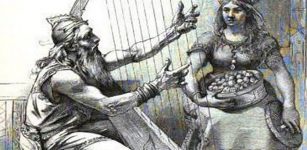 Bragi – Norse God Of Poetry, Eloquence, Music And Singing And Husband To Idun Who Protected Golden Apples
Featured Stories | Mar 17, 2018
Bragi – Norse God Of Poetry, Eloquence, Music And Singing And Husband To Idun Who Protected Golden Apples
Featured Stories | Mar 17, 2018 -
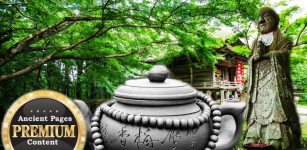 Ancient Mysteries Of Japan – Remarkable Story Of An Unknown Civilization And Lost Knowledge – Part 2
Ancient Mysteries | Sep 2, 2019
Ancient Mysteries Of Japan – Remarkable Story Of An Unknown Civilization And Lost Knowledge – Part 2
Ancient Mysteries | Sep 2, 2019 -
 Feared Skinwalker – Shapeshifter That Uses Mind Control To Hurt Victims In Native American Mythology
Featured Stories | May 16, 2019
Feared Skinwalker – Shapeshifter That Uses Mind Control To Hurt Victims In Native American Mythology
Featured Stories | May 16, 2019 -
 Remains at Crenshaw Site Are Local, Ancestors Of Caddo – New Study
Archaeology | Jun 15, 2023
Remains at Crenshaw Site Are Local, Ancestors Of Caddo – New Study
Archaeology | Jun 15, 2023 -
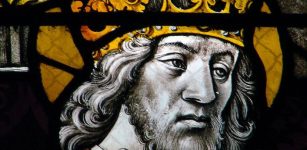 On This Day In History: Charlemagne King Of The Franks And Emperor Of The Holy Roman Empire Born – On April 2, 742
News | Apr 2, 2017
On This Day In History: Charlemagne King Of The Franks And Emperor Of The Holy Roman Empire Born – On April 2, 742
News | Apr 2, 2017 -
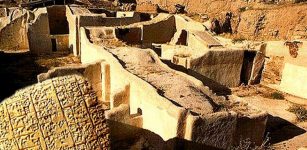 Controversial Discovery : 15,000 Ancient Ebla Tablets Prove Old Testament To Be Accurate
Archaeology | Oct 5, 2015
Controversial Discovery : 15,000 Ancient Ebla Tablets Prove Old Testament To Be Accurate
Archaeology | Oct 5, 2015 -
 Zeus – ‘Cloud Collector’, God Of Order, Law And Justice – Most Powerful God Of Olympian Pantheon
Featured Stories | Jan 3, 2019
Zeus – ‘Cloud Collector’, God Of Order, Law And Justice – Most Powerful God Of Olympian Pantheon
Featured Stories | Jan 3, 2019 -
 Earliest Systematic Coal Exploitation For Fuel Goes Back To ~3600 B.P.
Archaeoastronomy | Aug 2, 2023
Earliest Systematic Coal Exploitation For Fuel Goes Back To ~3600 B.P.
Archaeoastronomy | Aug 2, 2023 -
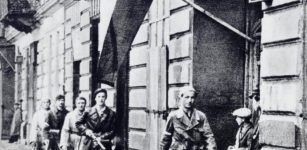 On This Day In History: The Warsaw Uprising Began – On August 1, 1944
News | Aug 1, 2016
On This Day In History: The Warsaw Uprising Began – On August 1, 1944
News | Aug 1, 2016 -
 Ancient Giants In Ecuador Were Killed By Fire From The Sky – Indian Legends Reveal
Ancient Mysteries | Dec 12, 2017
Ancient Giants In Ecuador Were Killed By Fire From The Sky – Indian Legends Reveal
Ancient Mysteries | Dec 12, 2017 -
 Rare Byzantine Gold Coin Discovered In Norway – Was It Brought By Harald Hardrada From Constantinople
Archaeology | Dec 12, 2023
Rare Byzantine Gold Coin Discovered In Norway – Was It Brought By Harald Hardrada From Constantinople
Archaeology | Dec 12, 2023 -
 Arrival Of A Mysterious Figure Triggers Unexplained Phenomena In Iceland – Strange Story From A Norse Saga
Featured Stories | Feb 16, 2025
Arrival Of A Mysterious Figure Triggers Unexplained Phenomena In Iceland – Strange Story From A Norse Saga
Featured Stories | Feb 16, 2025 -
 Unknown Biological Entities And Disturbing Weather Phenomenon In Washington Still Baffle Scientists
Featured Stories | Jul 23, 2019
Unknown Biological Entities And Disturbing Weather Phenomenon In Washington Still Baffle Scientists
Featured Stories | Jul 23, 2019 -
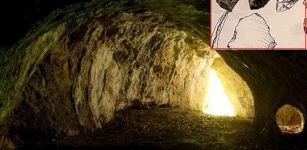 Half-A-Million Year Old Signs Of Extinct Human Species Discovered In Polish Cave
Archaeology | Nov 30, 2022
Half-A-Million Year Old Signs Of Extinct Human Species Discovered In Polish Cave
Archaeology | Nov 30, 2022


